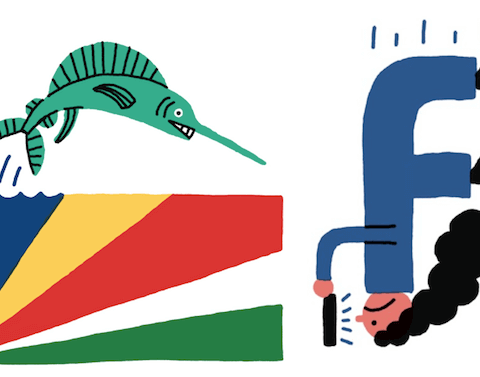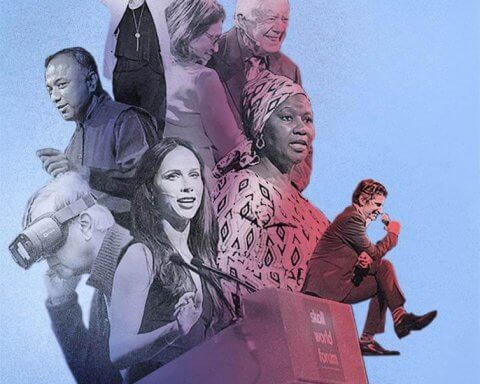Despite the fact that almost two million Canadians identify as First Nations, Métis, and Inuit, the government of Canada has yet to sign onto the United Nations Declaration on the Rights of Indigenous Peoples (UNDRIP).
The Government of Canada says they are making strides to come across as fair, but many First Nations believe “fair” will only occur when all of their rights are respected.
Of those rights, land claims are the main point of contention between the Federal government and First Nations peoples and the most contested article in UNDRIP.
After years of conflict, document drafting, and protests surrounding development projects, many Aboriginal communities were filled with hope following the March 2010 Throne Speech, which included a promise to make steps towards endorsing UNDRIP.
UNDRIP was drafted in 1985 with the help of more than 100 Indigenous organizations, and yet the UN Permanent Forum on Indigenous Issues continues to refer to the 370 million Indigenous peoples in 70 countries worldwide as the most “disadvantaged and vulnerable groups of peoples in the world today.”
The creation of the declaration was considered an unprecedented, comprehensive statement on the rights of Indigenous peoples. But the Government of Canada has been opposed to UNDRIP since the un adopted the declaration on Sept. 13, 2007. A majority of states voted in favour, while Australia, Canada, New Zealand, and the U.S. voted against the 46 articles.
Australia’s government changed its tune and adopted the declaration in April 2009 after Prime Minister Kevin Rudd formally apologized for injustices inflicted on its Aborigines. The government hoped it would usher in a new era of recognition and reconciliation, and accompanied the apology with a pledge to close the 17-year life expectancy gap between Aborigines and other Australians.
In 2006, Australia’s indigenous population was 517,200—2.5 per cent of its total population and in the same year, Canada’s Aboriginal population was 3.8 per cent, meaning almost 1.8 million people identified themselves as First Nations, Métis, or Inuit.
Since its inception in 2007, the Federal Government has not been comfortable with agreeing to all of the terms that accompany UNDRIP. Chuck Strahl, the Minister of Indian and Northern Affairs Canada, was quoted in a 2007 cbc article as referring to the declaration as unbalanced and unaligned with Canada’s Charter of Rights and Freedoms.
A portion of Article 26 reads: “Indigenous peoples have the right to own, use, develop and control the lands, territories and resources that they possess by reason of traditional ownership or other traditional occupation or use, as well as those which they have otherwise acquired.”
It has been argued that the most troublesome area of the declaration for the federal government is relinquishing control of lands over to the respective Aboriginal communities. With landscapes of several Canadian territories saturated with valuable resources, a loss of control over said lands is a potentially expensive forfeit.
Development companies working in these disputed lands are often left in the middle trying to balance their ambitions to create revenue with new projects while respecting the sacred demands of the affected Indigenous communities.
First Nations often refer to their treaties when they feel their rights are infringed upon during development—such as oil sands projects— but treaties do not always have enough weight to stop a multi-million dollar development project. As a result, it is common for First Nations who feel threatened by projects to create physical blockades to protect their land, and, at times, livelihood. These blockades often delay development companies, which can mean time and money spent in negotiations and courtrooms.
First Nations people set up a roadblock in Caledonia, Ontario in 2006 to stop development on a 40-hectare piece of property. While developer Henco Industries had the legal land certificate, First Nations people claimed the land was wrongfully taken from them in the 18th century. The stand off between protestors and police included countless injuries due to tear gas and taser use, and numerous arrests. Road blockades occurred as far away as Quebec. The protest has lasted for years and continues to cost millions in losses to the developer and the Ontario government.
If Canada makes the decision to sign onto UNDRIP, this could significantly diminish the costly drama that currently surrounds many development projects on Aboriginal territory.
In December 2009, Northwest & Ethical Investments published Lines in the Sands: Oil Sands Sector Benchmarking, which is meant to help investors compare the risks associated with publicly-listed oil sands companies. An entire section outlines various Aboriginal engagement practices used by some of the biggest players in the oil industry. The report explains that it is a mistake for companies to engage with Aboriginal communities as if they are just general stakeholders—they have a nationto- nation relationship with the Crown that is distinct from that of other communities. Oil sands project proposals can directly conflict with First Nations and Métis constitutional rights.
Another common issue is accommodating all impacted communities. Many Nations share territories for resources or even sacred burial grounds where ancestors have been laid to rest. Some industries are unaware of the importance of consulting all of the Nations that could be affected by proposed development. All companies surveyed for Lines in the Sands said they were able to identify Aboriginal communities impacted by their operations, though some admitted they had difficulty determining what constituted an impacted community.
Confusion surrounding consultation between Indigenous communities and interested industries could also be reduced if the declaration is made as a clear reference to Indigenous rights.
Shawn Atleo, Assembly of First Nations National Chief, is one person who is anxious to get the ball rolling on Canada endorsing UNDRIP. From the moment he settled into his position nine months ago, Atleo has been clear that UNDRIP is something he is passionate about. According to Atleo, Canada adopting UNDRIP would mark the beginning of complete and thorough consultation regarding First Nations land.
“There will continue to be conflicts until it is recognized that First Nations have the right to prior and informed consent and must be consulted right at the outset of any proposal of development that happens in their territory,” says Atleo.
Atleo and other First Nations leaders yearn for open dialogues and respect of First Nations governance and traditions during the consultation process. However, Atleo says the health and safety of the affected residents comes before industrial ambitions.
“The need for clean water or a watershed might have to trump plans for development.”
Despite Canada’s cautious baby steps towards signing onto UNDRIP, most Aboriginal communities in Canada look forward to the symbolic significance that is tied to the declaration. Australia’s Prime Minister Kevin Rudd honouring UNDRIP shortly after his formal apology to Australia’s Aborigines for past government injustices, perhaps solidified the gesture as a sincere step forward, as opposed to lip-service.







